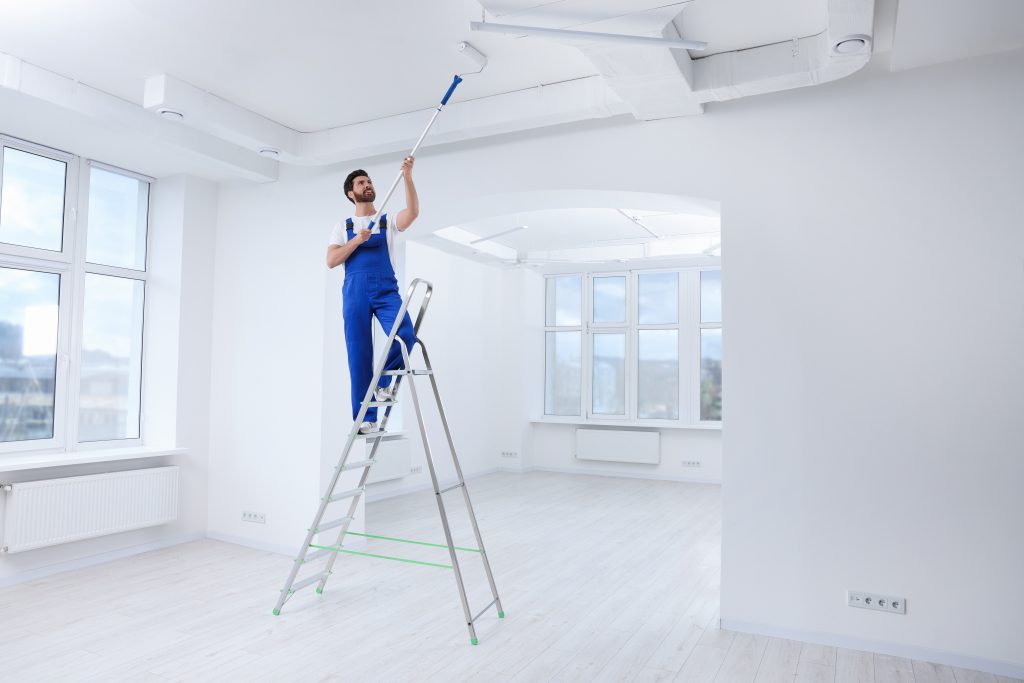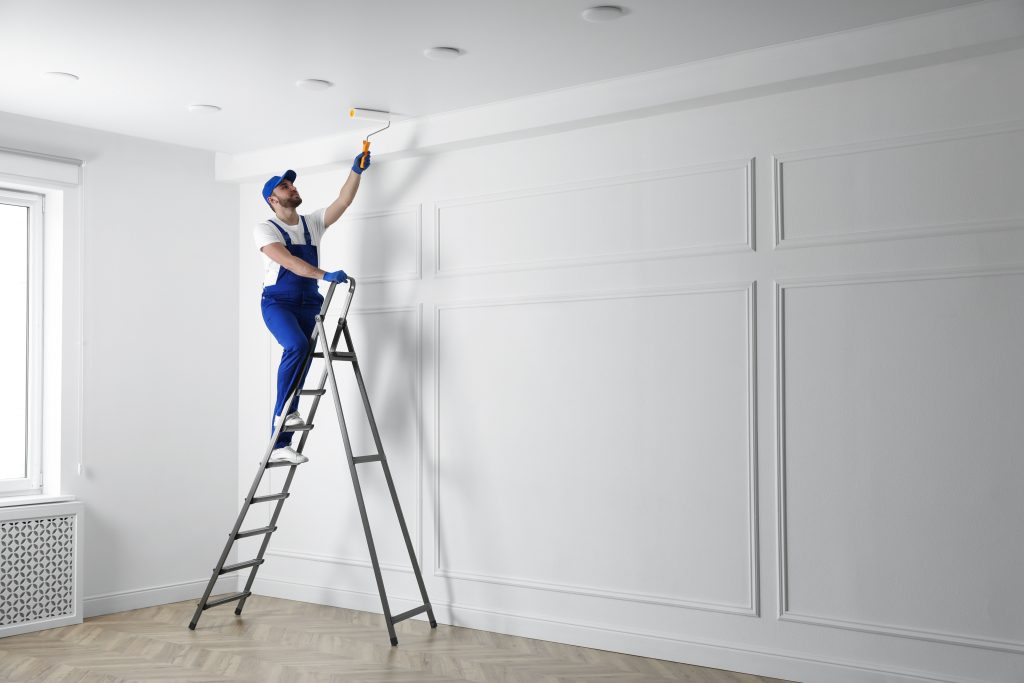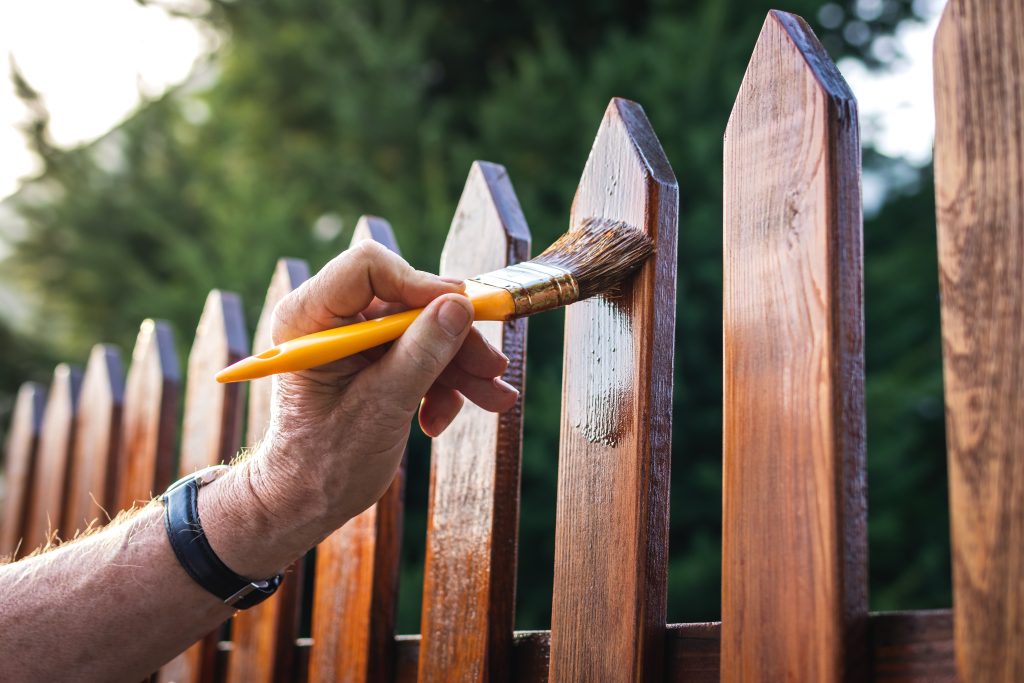Initial Consultation:
The home painting process typically begins with an initial consultation. During this phase, you discuss your goals, preferences, and budget with experienced painters. This initial conversation helps in creating a clear plan for your project.
Color Selection:
Choosing the right colors is a crucial part of the process. Professional painters can provide guidance on color selection, considering factors like the room’s size, lighting, and your personal style.
Surface Preparation:
Proper preparation is key to achieving a high-quality paint job. This step includes patching holes, sanding rough surfaces, and ensuring that the surfaces are clean and free of dust and debris.
Protection of Fixtures and Furniture:
All fixtures, furniture, and flooring in the area to be painted are protected to prevent any accidental damage during the painting process.
Priming:
A high-quality primer is applied to the surfaces to ensure that the paint adheres properly and provides a consistent finish.
Paint Application:
Experienced painters apply the selected paint with precision and attention to detail. The number of coats depends on the specific requirements and the desired finish
Trim and Detail Work:
Special attention is given to the trim, baseboards, and other details, which are often painted with a different finish or color to create contrast.
Clean Lines and Edging:
Neat and clean lines at edges and corners are achieved using masking tape and careful painting techniques. After the paint has dried, the area is cleaned up thoroughly. Painters remove masking tape, coverings, and any debris, leaving the space ready for use. After all the work is completed, a final inspection is carried out to ensure that the painting job meets high standards of quality and customer satisfaction. Clients are invited to participate in a final walk-through to review the work and ensure that it aligns with their vision. If any touch-ups are required, they are addressed at this stage, ensuring that every detail is perfect.




